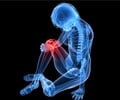- Septic Arthritis (Infectious Arthritis) - (http://www.medicinenet.com/septic_arthritis/article.htm)
- Septic Arthritis - (http://arthritis.webmd.com/septic-arthritis-symptoms-diagnosis-and-treatment)
What is Septic Arthritis / Infectious Arthritis?
Septic Arthritis or Infectious Arthritis is infection of a joint due to bacteria or other organisms.
Septic Arthritis also known as Infectious Arthritis refers to infection of a joint. It may involve one or more joints. It most commonly affects the knee joint, followed by hip, shoulder and elbow.
unattended, the joint may get destroyed soon.

Causes of Septic Arthritis
Bacteria are the commonest organisms that cause septic arthritis. The bacteria that are commonly implicated in this condition include Staphylococcus aureus, Streptococcus, Hemophilus influenzae, Neisseria gonorrhea, Escherichia coli and Pseudomonas aeruginosa. The organisms reach the joint space through blood from the source of infection, which could be an abscess or an injured tissue. They could also spread locally from an infection in the nearby tissues. Viruses, mycobacteria and fungi can also cause septic arthritis.

Risk Factors of Septic Arthritis
Patients with reduced immunity are at a risk of suffering from septic arthritis. These include:
- Patients suffering from HIV, diabetes and rheumatic disease.

- Patients on medications that reduce immunity like steroids, anticancer drugs, azathioprine and cyclosporine.
- Young children and elderly people.
Other predisposing factors for septic arthritis are:
- Injury to a joint or a neighboring area.
- Presence of prosthetic joints.
Symptoms and Signs of Septic Arthritis
The patient presents with the following features:
- Fever with chills
- Pain and swelling over the affected joint

- On examination, the joint appears warm, red, swollen and stiff. The patient is unable to move the limb at the affected joint.
Diagnosis of Septic Arthritis
Septic arthritis is diagnosed using the following tests:
- Joint fluid examination: The joint fluid is obtained from the affected joint using a needle and syringe. It is examined under the microscope for the presence of white blood cells, which suggest infection. Culture of the fluid will identify the organism responsible for the infection and help to determine its sensitivity to the antimicrobial drug.
- X-ray: X-ray of the joint can reveal evidence of bone injury.
- MRI: MRI can aid in the assessment of joint destruction.

Treatment of Septic Arthritis
Treatment of septic arthritis includes the following:
- Antibiotics or other antimicrobials are used in the treatment of septic arthritis. Treatment is started immediately, using broad-spectrum antimicrobials initially. This type of medication covers a wide range of pathogens. Later, based on culture report, a drug that acts specifically against the causative organism will be given. Treatment is given intravenously for a duration of four to six weeks.

- For rapid recovery, the joint fluid is drained.
- The joint can be irrigated and infected tissue removed by arthroscopy. Open surgery may be necessary in some cases.









